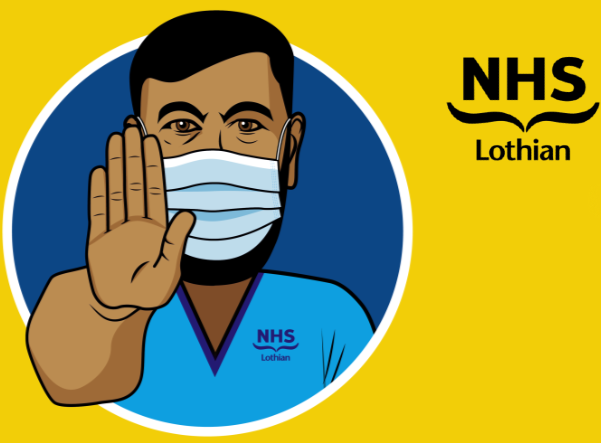Making and sterilising bottles
Not everyone chooses to breastfeed their baby. If bottle feeding is your method of choice, then the staff here in the neonatal unit are available to support you. You may feel that you want to bottle feed with expressed breast milk (EBM) or use the formula milks that are available to buy.
Bottle feeding with formula milk
Some of the information in these pages is new and may be different to the way that you have bottle fed in the past. These changes have been made to reduce the risk of infection and to ensure the safety of your baby.
Why it is important to follow these guidelines?
Powdered formula milk is not a sterile product and the powder may contain harmful bacteria. There have been instances where the bacteria Enterobacter sakazakii has been identified in both opened and unopened tins of formula.
Below is a link to a PDF document from the World Health Organisation about the bacteria found in formula milk (access only available outside of the neonatal unit).
Safe preparation, storage and handling of powdered infant formula Guidelines
Infections caused by these bacteria are rare but when they do occur they can have devastating consequences and can cause neurological disorders or even death. It is important know how to disinfect your feeding equipment prior to making up a formula feed.
Sterilising your equipment
You may have read that when making up a bottle feed, the bottle, teat, collar and cap must be ‘sterilised’ before the feed is made up. Sterilisation means to get rid of all germs that might be on the surfaces of equipment. It is a term that has been used for many years but we now know that the ‘sterilisation’ processes used in the home don’t ‘sterilise’ feeding equipment, but rather disinfects it. Because sterilisation is a term we are used to using when talking about feeding equipment, we will continue to use it here.
No matter which sterilisation procedure you choose, the first and most important step in the cleaning process is to remove all milk residue from the equipment. To do this, mix a drop of washing up liquid into hand-hot water. Place the bottle, teat, collar and cap into the water and wash each part paying particular attention to areas that are difficult to get into e.g. the ridges in the neck of the bottle. You may find a bottle brush will help to get into difficult areas. Once all the milk has been removed, rinse the parts in cold, running water before using one of the ‘sterilisation’ methods described below. It is advisable that you wash your feeding equipment separately from your dishes or other kitchen items.
Cold water sterilisation
With this process, some chemical, be that fluid or a tablet, is added to cold water. You must read the manufacturer’s instructions to get the right concentration of fluid/tablet to water, soak time and whether or you need to rinse the equipment after soaking and before making up a feed. General points:
- All equipment must be placed into the solution.
- Bottles should be filled with the water to ensure there are no air bubbles trapped inside.
- A floating cover should be placed over all the equipment to make sure that it stays submerged.
- All the feeding components need to stay in the sterilising solution before use but you must check individual manufacturer’s instructions as they may have different soak times.
- New sterilisation solution must be made up every 24 hours. This has to be done whether you are using sterilisation tablets or fluid. It is a good idea to get into the habit of doing this at the same time every day, You are then less likely to forget. Clean the sterilising container thoroughly in warm, soapy water, before making up a fresh lot of solution.
- With certain brands there is no need to rinse of the solution before use, with others, equipment should be rinsed with boiled cooled water.
Steam sterilisation
With this process, germs are killed by the high temperatures of the stream. There are several different types of steam sterilisers available so it is vitally important that you follow the instructions provided by the manufacturer. General points:
- It is ideal to sterilise equipment just before you use it.
- Bottles and teats are placed in the steriliser with the open ends facing downwards. Check the manufacturer’s instructions for how the other components should be fitted in. These sterilisers work quickly and equipment should be ready to use within minutes.
- Different manufacturers will have individual instructions as to how long the equipment will stay sterile in an unopened sterilising unit, please read the instructions.
Boiling
With this process, germs are killed by the high temperatures of the boiling water. General points:
- Bottles can be boiled on the hob in a saucepan of boiling water. Add enough water to cover all the equipment, making sure there are no air bubbles.
- Bring water to the boil, and boil rapidly for 10 minutes ensuring the equipment stays under the water.
- Drain the boiling water and allow the equipment to cool
- Wash your hands thoroughly before handling the sterilised equipment
- Take the equipment from the saucepan and empty out any excess water before making up a feed
- If you are not using the equipment straight away, allow it to air dry thoroughly before putting all the parts together and storing it in a clean container.
- Re-boil the bottle and other equipment if it is not used within 24 hours.
When using steam or boiling method for your feeding equipment, please be careful when handling the bottles etc. as they may be very hot on completion of the sterilisation process.














